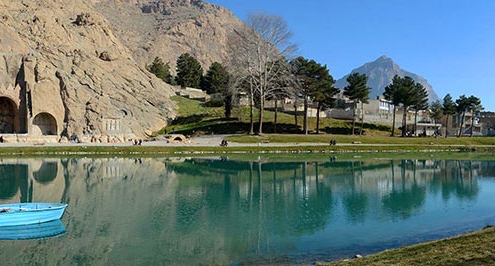
Susa attractions infographic
/
0 Comments
Located in the south-west of Iran, on the foothill of Zagros…
 https://irandoostan.com/dostcont/uploads/2020/07/visit-Iran-banner2.jpg
266
712
Farima Fehrest
https://irandoostan.com/dostcont/uploads/2025/05/Irandoostan-logo.webp
Farima Fehrest2020-07-06 17:03:002025-05-11 11:46:13Best time to visit Iran
https://irandoostan.com/dostcont/uploads/2020/07/visit-Iran-banner2.jpg
266
712
Farima Fehrest
https://irandoostan.com/dostcont/uploads/2025/05/Irandoostan-logo.webp
Farima Fehrest2020-07-06 17:03:002025-05-11 11:46:13Best time to visit Iran
Irandoostan tour and Travelife Sustainability System
Irandoostan Tour (IDT) is engaged with the Travelife certification…

Waste Separation at Source: The first step to go green
Have you ever wondered what will happen to the unseparated wastes?…

Shiraz attractions infographic
Shiraz, known as the city of flowers, nightingales, and lovers…

Isfahan attractions infographic
Isfahan, known as the city of marvel embraces the finest architectural…

Things to do in Hamedan (opening hours, photos, & more)
History, poetry, knowledge, and art, they all could be found…

Persian Gulf islands: Qeshm, Hormoz, Hengam (video)
This short memory of the amazing southern islands of Iran would…

Shiraz tourist attractions video
You may have heard Shiraz's name in case of talking about drinks.…

Things to do in Kermanshah (with photos)
Known as one of the oldest settlements of the world, there are…

Things to do in Mashhad (photos, timing, info)
Whenever you hear the name of Mashhad city, you may probably…
 https://irandoostan.com/dostcont/uploads/2020/05/rsz_yazd.jpg
266
712
Naeimeh Nakhaei
https://irandoostan.com/dostcont/uploads/2025/05/Irandoostan-logo.webp
Naeimeh Nakhaei2020-05-10 09:51:592025-04-13 14:32:36Yazd virtual tour (free)
https://irandoostan.com/dostcont/uploads/2020/05/rsz_yazd.jpg
266
712
Naeimeh Nakhaei
https://irandoostan.com/dostcont/uploads/2025/05/Irandoostan-logo.webp
Naeimeh Nakhaei2020-05-10 09:51:592025-04-13 14:32:36Yazd virtual tour (free) https://irandoostan.com/dostcont/uploads/2020/05/rsz_1isfahan_.jpg
266
712
Naeimeh Nakhaei
https://irandoostan.com/dostcont/uploads/2025/05/Irandoostan-logo.webp
Naeimeh Nakhaei2020-05-09 13:19:432025-04-13 14:32:36Isfahan virtual tour (free)
https://irandoostan.com/dostcont/uploads/2020/05/rsz_1isfahan_.jpg
266
712
Naeimeh Nakhaei
https://irandoostan.com/dostcont/uploads/2025/05/Irandoostan-logo.webp
Naeimeh Nakhaei2020-05-09 13:19:432025-04-13 14:32:36Isfahan virtual tour (free) https://irandoostan.com/dostcont/uploads/2020/05/Kerman.jpg
266
712
Farima Fehrest
https://irandoostan.com/dostcont/uploads/2025/05/Irandoostan-logo.webp
Farima Fehrest2020-05-07 12:52:542025-04-13 14:32:37Kerman virtual tour (free)
https://irandoostan.com/dostcont/uploads/2020/05/Kerman.jpg
266
712
Farima Fehrest
https://irandoostan.com/dostcont/uploads/2025/05/Irandoostan-logo.webp
Farima Fehrest2020-05-07 12:52:542025-04-13 14:32:37Kerman virtual tour (free)
Shiraz virtual tour (free)
Quarantine is often an unpleasant experience for those who are…
 https://irandoostan.com/dostcont/uploads/2020/05/Rasht.jpg
266
712
Farima Fehrest
https://irandoostan.com/dostcont/uploads/2025/05/Irandoostan-logo.webp
Farima Fehrest2020-05-01 02:28:542025-04-13 14:32:39Gilan virtual tour (free)
https://irandoostan.com/dostcont/uploads/2020/05/Rasht.jpg
266
712
Farima Fehrest
https://irandoostan.com/dostcont/uploads/2025/05/Irandoostan-logo.webp
Farima Fehrest2020-05-01 02:28:542025-04-13 14:32:39Gilan virtual tour (free)
rhinoplasty in Iran: Four steps to take before the procedure
Have a call for rhinoplasty? If you are reading this article,…

How is Coronavirus affecting social life in Iran?
What is Covid-19? Well, you are right; technically it is a respiratory…


